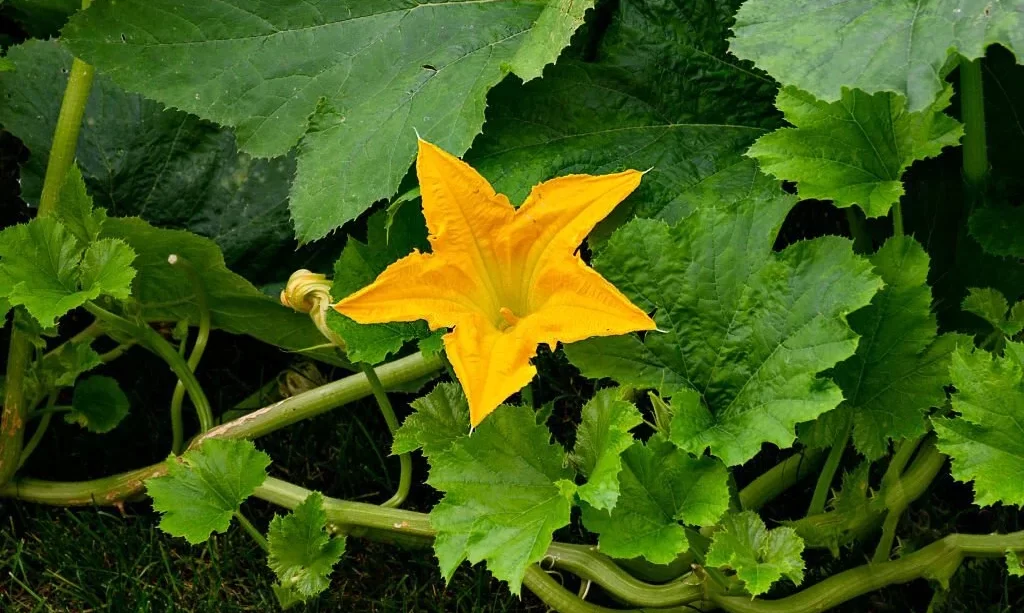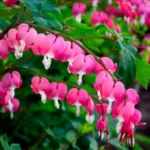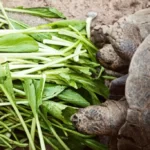When it comes to culinary delights, pumpkin flowers often remain a hidden gem. These delicate blossoms, with their vibrant colors and subtle flavors, hold the potential to elevate your culinary adventures to new heights. In this article, we will unravel the mysteries of pumpkin flowers and explore their culinary possibilities. If you’ve ever wondered, “Can you eat pumpkin flowers?” or if you’re simply looking to expand your culinary horizons, read on. From understanding the anatomy of pumpkin flowers to discovering their edible parts, we’re about to embark on a journey into the world of these edible floral treasures.
- VARIETIES – Baby Boo, Sugar Pie, Jack O Lantern, Jack Be Little, Giant Big Max Pumpkin Seeds for Planting.
- OUTDOOR GARDEN – Fun vegetable perfect for your outdoor garden. Seeds can be sown directly into the garden.
- TASTY AND PRETTY – There’s nothing more satisfying than growing your own giant pumpkin, or small baby boo pumpkins.
- SUMMER / FALL – Pumpkins are grown in the summer and enjoyed throughout the fall and winter months.
- USA – All of our non-GMO, heirloom pumpkin seeds for planting were grown, harvested and packaged in the USA.
Pumpkin Flowers
Pumpkin flowers are not just a pretty face in the garden; they play a vital role in the pumpkin plant’s lifecycle. To fully appreciate their culinary potential, it’s essential to grasp the fundamentals:
- Types of Pumpkin Flowers: There are two main types of pumpkin flowers: male and female. Male flowers typically appear first and serve primarily as pollinators. Female flowers, recognized by the small, immature fruit at their base, are essential for fruit production.
- Lifecycle Significance: Pumpkin flowers are instrumental in the reproduction of the pumpkin plant. Bees and other pollinators transfer pollen from male to female flowers, enabling the formation of pumpkin fruits.
- Harvest Timing: To maximize their culinary appeal, pumpkin flowers should be harvested at the right stage of development. Male flowers are often the preferred choice for cooking, but female flowers with their attached small fruit can also be used.
Edible Parts of Pumpkin Flowers
The edible parts of pumpkin flowers offer a delightful array of culinary possibilities:
- Petals: The most commonly consumed part of pumpkin flowers is the delicate, colorful petals. They possess a mild, slightly sweet flavor that can complement a variety of dishes.
- Immature Fruit (Optional): In the case of female pumpkin flowers, the small, undeveloped fruit at the base is also edible. This tiny fruit is tender and can be a delightful addition to certain dishes.
- Stem Removal: Before cooking, it’s important to remove the green stem of the flower, as it can be tough and detract from the overall texture of the dish.
Understanding these edible parts of pumpkin flowers is the first step in unlocking their culinary potential. Whether you choose to stuff, fry, sauté, or use them as a garnish, these petals and, occasionally, the tiny attached fruit can add a touch of elegance and flavor to your culinary creations.
Culinary Uses
Pumpkin flowers are like nature’s gift to creative cooks, offering a range of culinary possibilities limited only by your imagination. Here are some delightful ways to incorporate these edible blossoms into your culinary repertoire:
- Stuffed Pumpkin Flowers: One of the most popular and exquisite preparations is stuffing pumpkin flowers with a variety of ingredients like cheese, herbs, and even cooked grains. After stuffing, gently seal the petals and cook them to perfection.
- Tempura-Fried Delicacies: Pumpkin flowers make an exceptional addition to tempura, the Japanese deep-frying technique. The light, crispy texture of tempura pairs wonderfully with the delicate flavor of the flowers.
- Salad Enhancements: Add a touch of elegance to your salads by tossing in fresh, edible pumpkin flowers. They not only contribute a mild, slightly sweet taste but also provide a burst of color and visual appeal.
- Pasta Partners: Elevate your pasta dishes by incorporating pumpkin flowers. They can be lightly sautéed with garlic and olive oil and then tossed with pasta for a simple yet delightful meal.
- Pizza or Flatbread Toppings: If you’re a fan of homemade pizzas or flatbreads, consider adding thinly sliced pumpkin flowers as a unique and flavorful topping.
- Fritters and Pancakes: Create pumpkin flower fritters by dipping the flowers in a light batter and frying until golden brown. You can also mix them into pancake batter for an unconventional twist on classic pancakes.
These culinary applications not only showcase the versatility of pumpkin flowers but also allow you to experiment with different flavors and textures. The delicate sweetness and tender texture of the petals make them an excellent addition to both savory and sweet dishes.
Nutritional Value
Pumpkin flowers aren’t just a culinary delight; they also offer some nutritional benefits. Here’s a glimpse into their nutritional profile:
- Vitamins and Minerals: Pumpkin flowers are a source of essential vitamins and minerals, including vitamin C, vitamin A, vitamin K, calcium, and iron.
- Low-Calorie Option: They are naturally low in calories, making them a healthy choice for those looking to maintain or lose weight while still enjoying delicious meals.
- Antioxidants: Like many edible flowers, pumpkin flowers contain antioxidants that can help protect your cells from oxidative stress and support overall health.
- Fiber: Although not a significant source of dietary fiber, pumpkin flowers can contribute to your daily fiber intake when consumed as part of a balanced diet.
While pumpkin flowers may not be a nutritional powerhouse on their own, they can certainly enhance the nutrient profile of your meals. Their low-calorie content and delicate flavor make them an appealing addition to a variety of dishes, whether you’re aiming for a nutrient boost or simply indulging in their culinary charm.
Harvesting and Preparation
To fully savor the culinary delights of pumpkin flowers, it’s essential to know how to harvest and prepare them:
- Harvesting: Begin by selecting fresh, vibrant pumpkin flowers. The best time to harvest is in the morning when the flowers are at their peak. Carefully snip or pinch the flowers near the base of the stem to avoid damaging the plant.
- Petals-Only Harvest: For most culinary applications, it’s best to use only the petals. Gently remove the green stem, which can be tough and detract from the desired texture. This can be done by carefully pinching the base of the flower and sliding your fingers upward to remove the stem.
- Cleaning: Once harvested and the stems removed, gently rinse the petals under cool running water to remove any dirt or insects. Pat them dry with a clean towel or paper towel.
- Preparation: Depending on your chosen recipe, you may stuff, sauté, fry, or add pumpkin flower petals to your dishes. The preparation method will vary, so follow your selected recipe for specific instructions.
Precautions and Considerations
While pumpkin flowers are a delightful addition to many dishes, a few precautions and considerations are worth noting:
- Moderation: Like most foods, it’s advisable to enjoy pumpkin flowers in moderation as part of a balanced diet. While they are safe to eat, consuming excessive amounts may lead to digestive discomfort.
- Allergies: Individuals with allergies to certain plants, such as ragweed or other members of the Cucurbitaceae family (which includes pumpkins), should exercise caution when trying pumpkin flowers, as cross-reactivity may occur.
- Safe Sourcing: Ensure that the pumpkin flowers you use for cooking come from plants that have not been treated with pesticides, herbicides, or other chemicals that are not safe for consumption. Organic or homegrown flowers are often the best choice.
- Cooking Techniques: Depending on your chosen culinary method, take care not to overcook pumpkin flowers, as this can lead to a loss of their delicate flavor and texture. They are best when cooked briefly to preserve their freshness.
Conclusion
In conclusion, the world of culinary delights is full of surprises, and pumpkin flowers are a prime example of nature’s culinary treasures. From their vibrant colors to their mild, slightly sweet flavor, these edible blossoms offer a delightful addition to your culinary repertoire.
Whether you stuff them with savory fillings, lightly fry them to crisp perfection, or simply toss them into a salad, pumpkin flowers have the power to elevate your dishes to gourmet status. Their nutritional value, low-calorie content, and antioxidant properties make them not only a culinary delight but also a healthy choice.
As you embark on your culinary journey with pumpkin flowers, remember to harvest them at the right time, clean them thoroughly, and prepare them with care. With these considerations in mind, you can explore the diverse culinary possibilities that these delicate blossoms offer.
So, the next time you encounter pumpkin flowers in your garden or at your local market, don’t hesitate to embrace their culinary charm. Whether you’re a seasoned chef or an adventurous home cook, pumpkin flowers are ready to bring a touch of elegance and flavor to your dining table.




